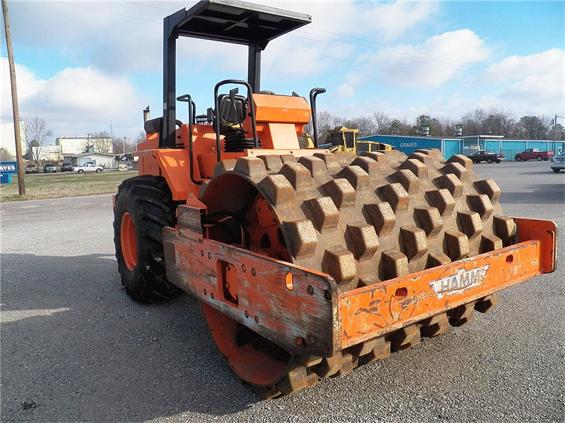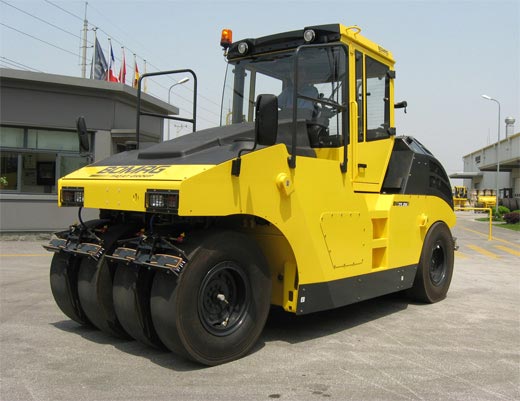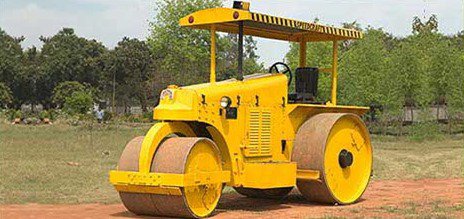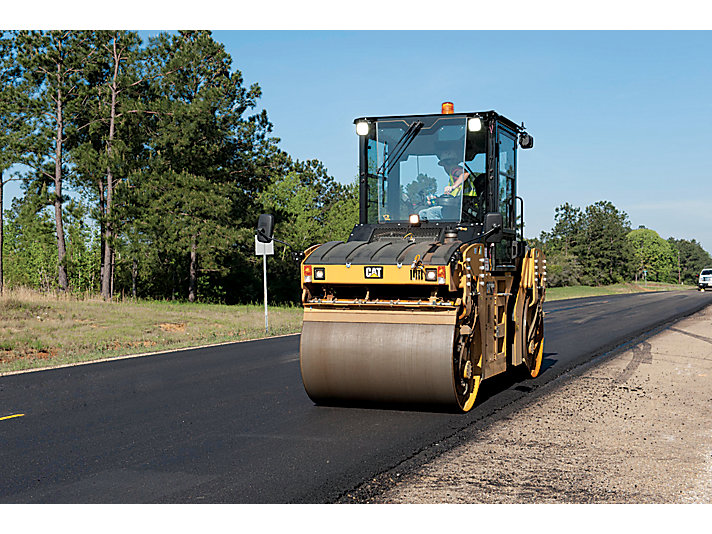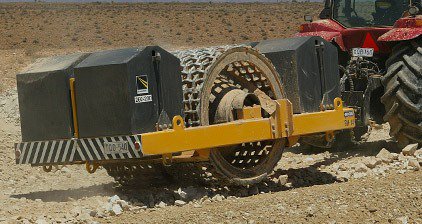Types of roller
Contents |
[edit] Introduction
Rollers are a type of construction plant used for compacting materials such as soil, gravel, sand, road surfaces and so on. The material can be compacted by vibration, impact loading, kneading, and direct pressure. Different types of roller can be used depending on the requirements of the project and the type of material that needs to be compacted.
[edit] Cylindrical roller
This is a traditional type of roller that is relatively lightweight and can be handled manually or, as was common throughout history, by animals such as oxen or horses. It is usually made of iron, concrete or stone and generally measures around 1 m in diameter and 1.5 m in length. The ground pressure that can be generated by a cylindrical roller is typically around 7 kg/cm2.
[edit] Sheepsfoot roller
Sheepsfoot rollers consist of a steel drum on which round or rectangular protrusions known as ‘lugs’ or ‘feet’ are fixed. There are different types of lug, such as spindle-shaped with widened base, prismatic and clubfoot. Rollers can also be static or vibratory.
The drum’s weight can be increased by ballasting with water, damp sand, or by mounting steel sections.
They are commonly used for compacting fine-grained soils such as heavy and silty clays. They are often used for compacting soils in dams, embankments and subgrade layers in pavements, road and railway projects.
The amount of soil compaction is governed by:
- The weight of the roller.
- The area of each lug.
- The number of lugs in contact with the ground.
- Total number of lugs per drum.
In general, 10 to 20 passes are required to provide complete coverage of the soil, and usually, the top layer of the consolidated soil will need to be finished with a smooth wheel roller.
[edit] Pneumatic tyred roller
Also known as rubber tyred rollers, these consist of a heavily-loaded wagon with several rows of closely-spaced tyres. They provide uniform pressure throughout the width covered, and are often used in pavement subgrade works, as they are suitable for compacting uniform coarse soils and rocks. They are also used to finish embankments compacted by sheepsfoot rollers
The factors which affect the amount of compaction that can be achieved are the weight, tyre inflation pressure and the area of contact.
[edit] Smooth wheeled roller
This type of roller incorporates a large steel drum at the front and one or two wheels or drums at the rear. If there is one wheel at the rear they are known as tandem rollers, and three-wheeled rollers if there are two wheels at the rear.
The weight of a tandem roller ranges from 2-8 tonnes, whereas the weight of a three-wheeled roller ranges from 8-10 tonnes. The ground pressure exerted by tandem rollers is typically around 10-17 kg/cm2.
The performance of a smooth wheeled roller depends on the load per cm width transferred to the soil (which is derived from the gross weight of the drum), and the drum diameter. They are most suitable for consolidating stone, gravel, sand, hardcore and ballast, but are not suitable for embankments, soft subgrades or uniform sands.
[edit] Vibratory roller
This type of roller is fitted with one or two smooth surfaced steel drums measuring 0.9-1.5 m in diameter, and 1.2-1.8 m in width. The drums vibrate by the rotation of an eccentric shaft inside. They are commonly used for compacting granular base courses and sometimes for asphalt, and are useful for compacting to greater depths.
They have higher outputs and improved performance compared to other rollers, but also generally come at a higher cost.
[edit] Grid roller
Grid rollers have a cylindrical heavy steel surface comprising a network of steel bars which form a grid with square-shaped holes. It is common for the roller to be ballasted with concrete blocks. This type of roller is generally a towed unit, and provides high contact pressure but minimal kneading action.
They are typically used for the compaction of well-graded coarse soils and weathered rocks, often in subgrade and sub-base road projects. They are not suitable for clayey soils, silty clays or uniform soils.
[edit] Find out more
[edit] Related articles on Designing Buildings Wiki
Featured articles and news
Social and affordable housing, a long term plan for delivery
The “Delivering a Decade of Renewal for Social and Affordable Housing” strategy sets out future path.
A change to adoptive architecture
Effects of global weather warming on architectural detailing, material choice and human interaction.
How big is the problem and what can we do to mitigate the effects?
Overheating guidance and tools for building designers
A number of cool guides to help with the heat.
The UK's Modern Industrial Strategy: A 10 year plan
Previous consultation criticism, current key elements and general support with some persisting reservations.
Building Safety Regulator reforms
New roles, new staff and a new fast track service pave the way for a single construction regulator.
Architectural Technologist CPDs and Communications
CIAT CPD… and how you can do it!
Cooling centres and cool spaces
Managing extreme heat in cities by directing the public to places for heat stress relief and water sources.
Winter gardens: A brief history and warm variations
Extending the season with glass in different forms and terms.
Restoring Great Yarmouth's Winter Gardens
Transforming one of the least sustainable constructions imaginable.
Construction Skills Mission Board launch sector drive
Newly formed government and industry collaboration set strategy for recruiting an additional 100,000 construction workers a year.
New Architects Code comes into effect in September 2025
ARB Architects Code of Conduct and Practice available with ongoing consultation regarding guidance.
Welsh Skills Body (Medr) launches ambitious plan
The new skills body brings together funding and regulation of tertiary education and research for the devolved nation.
Paul Gandy FCIOB announced as next CIOB President
Former Tilbury Douglas CEO takes helm.
UK Infrastructure: A 10 Year Strategy. In brief with reactions
With the National Infrastructure and Service Transformation Authority (NISTA).
Ebenezer Howard: inventor of the garden city. Book review.
Airtightness Topic Guide BSRIA TG 27/2025
Explaining the basics of airtightness, what it is, why it's important, when it's required and how it's carried out.







